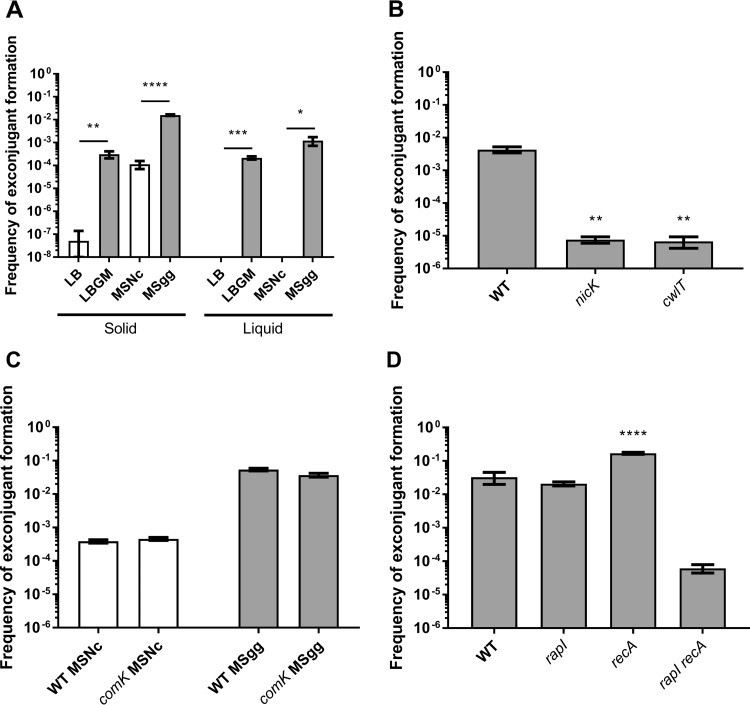FIG 1.
Biofilm formation enhances ICEBs1 transfer. (A) Donor cells with a kanamycin resistance cassette inserted in ICEBs1 were mated with recipient cells bearing an intergenic chloramphenicol resistance cassette in a 1:1 ratio on non-biofilm-inducing solid and liquid media (LB and MSNc [white bars]) and biofilm-inducing solid and liquid (pellicle-inducing) media (LBGM and MSgg [gray bars]). Statistical analysis indicates a significant increase in ICEBs1 transfer when biofilm is formed (Student’s t test; *, P < 0.05; **, P < 0.01; ***, P < 0.001; ****, P < 0.0001). (B) Conjugation-deficient donor cells (nicK and cwlT) were mated with WT cells on MSgg to assess mating efficiency. Statistical analysis shows a significant decrease in mating efficiency with the nicK and cwlT donor cells (one-way ANOVA; **, P < 0.01). (C) Transformation-deficient cells (comK) were mated on MSNc and MSgg, and mating efficiency was compared to that of WT cells. Statistical analysis shows no significant difference in mating efficiencies between comK and WT cells (Student’s t test). (D) Single and double mutant ICEBs1 activation pathway donor cells were mated with WT recipient cells on MSgg. Statistical analysis shows a significant increase of ICEBs1 mating efficiency between recA and WT donor cells, but not with the rapI mutant (one-way ANOVA; ****, P < 0.0001). While the double mutant showed a decrease in mating efficiency, that difference was not significant. For all panels, mating efficiency was measured after 20 h for solid media and 28 h for liquid media at 30°C. The results shown are representative of at least three independent experiments, and error bars represent the standard error of the mean (SEM).

